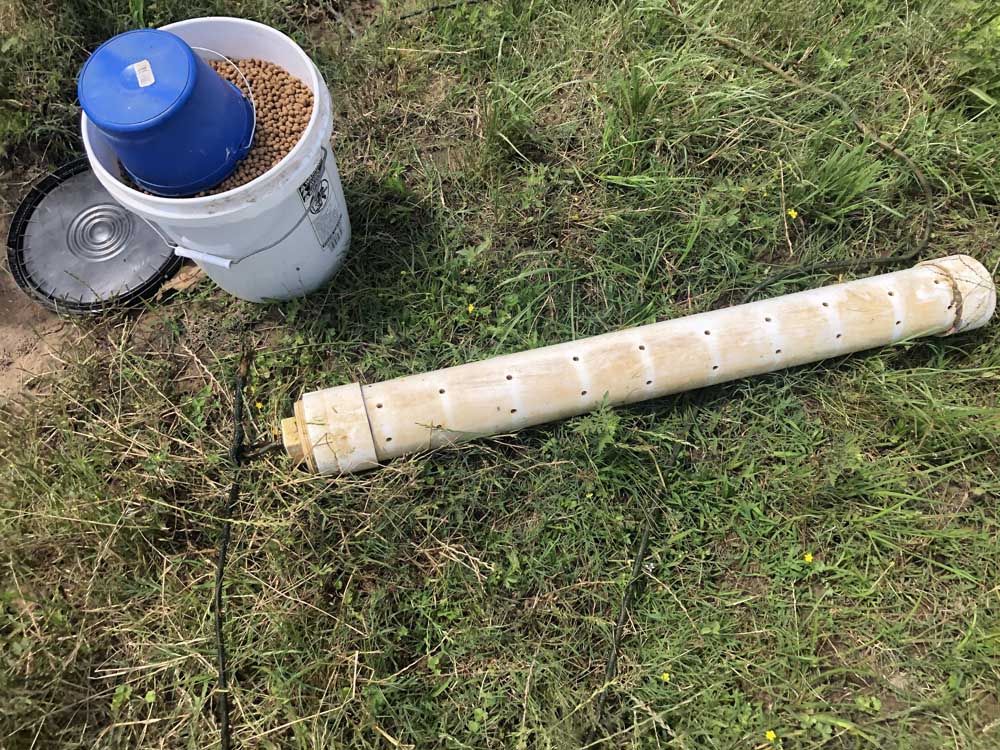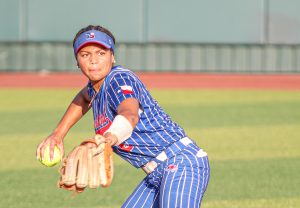Bigger Is Better: A Little Management Goes A Long Way On Private Lakes
Published 5:00 pm Saturday, June 19, 2021

- Providing feed for baitfish is one component to fisheries management. There are several types of feeders, including those on timers or just PVC pipe filled with pelleted feed.
It was one of those June mornings that make bass fishermen fish. The wind was blowing lightly out of the northeast, just enough to put a ripple on the lake. For four hours it did not matter what lure you threw, a bass was going to take a swipe at it.
I caught them on crankbaits, topwaters, frogs and swim baits. By the time the bite slowed, I had caught 26 bass — 16 of them were 14 inches and longer.
Trending
You might have guessed this was not a public lake. It was a 15-acre lake, but the fishing has not always been this quality. In March the vast majority of the bass caught were under 14 inches.
I took on a new adventure this spring helping manage the lake. I would not say it is work since a lot of fisheries management requires catching fish.
It has been years since bass have been removed from the lake so like with managing a deer herd, that was the place to start.
Actually, the place to start is talking with people who know something about fisheries management. I know some of the best locally and have leaned on the advice of former Texas A&M AgriLife Extension Service fisheries biologist Dr. Billy Higginbotham, Tyler Fish Farms’ Bob Waldrop and Juan Martinez, Texas Parks and Wildlife Department’s Jake Norman and Trey Carpenter, a wildlife biologist who also manages lakes for landowners in the Hill Country.
Management plans for any type of wildlife or fisheries is seldom a one-size-fits-all proposition, so after talks with the specialist I have taken something from each and put together the start of a plan for this lake.
The goal on the lake is not a trophy fishery, but instead a quality fishery where someone can go out and catch a lot of good bass with a chance at a bigger one. I learned long ago from Higginbotham that on private waters, you cannot have it both ways. You have to focus management on either a few really big fish or numbers, and for the owners of this lake, numbers is the best option.
Trending
With that in mind, a reverse slot was started with all bass between 10 and 14 inches being harvested at a conservative rate of 10 per acre. Depending on the condition of the lake and the goal, a harvest rate of 20 to 25 per acre could be necessary.
Of course, the easy way to do this is with a shocking rig on a boat. But where is the fun in that. Instead we have been doing it the old-fashioned way, fishing, and even with guests coming out from time to time catching 150, the right size is not easy. In three months, more than 300 bass have been caught, over 120 have been removed. That number is good, because another goal is to have 50 to 75 percent of the fish caught over 14 inches.
Surprisingly it has not taken that long to see a difference, and the current season catch shows about 70 percent over the 14-inch mark.
Another thing I learned from the experts is that to grow bigger bass, you need to take care of the baitfish, or bream in this case. The best way to do that is with feed. On a 15-acre lake, that would take two feeders on timers and at $200 to $600 a feeder that was out.
So I borrowed an idea from Tyler Fish Farms and have put out five PVC feeders around the lake. TFF uses six-inch pipe, but I went with four-inch pipe about four-feet long. The pipe is capped at both ends, with one a clean-out that can be opened, and perforated with five-sixteenth-inch holes. The feeders are filled with floating fish food and put out in two- to three-feet of water. They provide anytime feed because the fish can suck the pellets out of the holes.
Needing refilled every week or two depending on usage, the feeders are something lakefront property owners that are not on the lake daily could use as well to attract fish like bream and crappie, which ultimately attract bass.
Beginning in August, we will be weighing and measuring bass to the quarter inch and gathering information for weight ratio, but for now it is just the eyeball test.
Some of this may seem like going overboard. To real lake managers, it is just the least that can be done for a quality fishery. In the meantime, I have gone from catching 1-pound and smaller fish to bringing in 2-, 3- and 4-pounders, and that makes it worth the effort.







